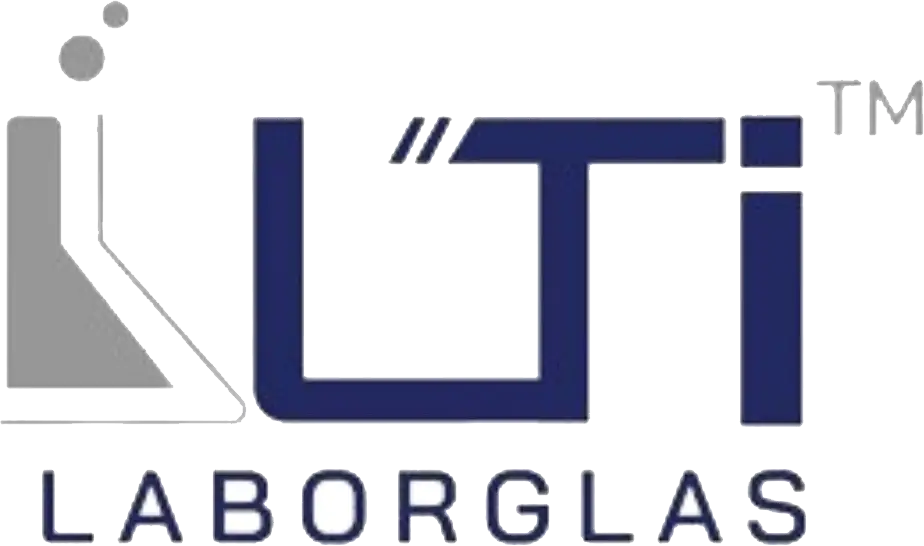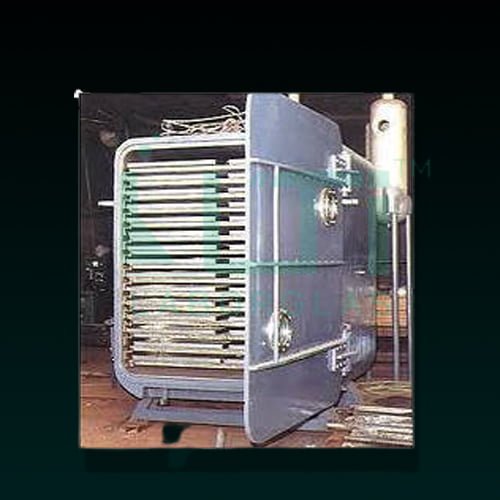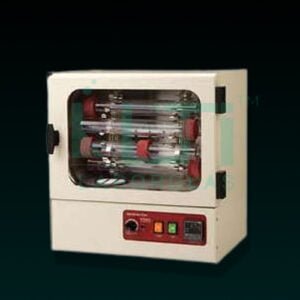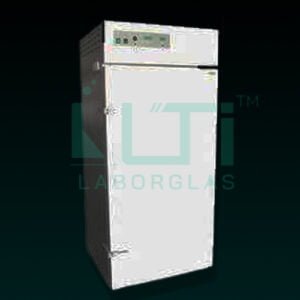Features:
- Vacuum Dryers Large Chamber suitable for applications involving backing drying, curing aging, vacuum embedding plating and moisture determination utilizing a nitrogen atmosphere
- Stainless steel 304 inner chamber and exterior of mild steel finished in epoxy powder coated shade in regular Model
- Inner made of 316L and exterior 304 S.S matt finishes in GMP model
- Electronic digital single set point controller provided precise temperature control
- The door has tampered safety glass viewing window
- All 5 sides radiant warm wall heating elements for better temperature uniformity
- Positive locking door latch and heavy hinges ensures a tight seal to all vacuum levels
- Vacuum levels are controlled between 2 and nearly 30 inches HG large analogue and easy to read vacuum gauge
A Vacuum Dryer Chamber is commonly used for:
- Low-Pressure Drying: Drying materials under reduced pressure conditions.
- Heat-Sensitive Materials: Suitable for materials sensitive to high temperatures.
- Solvent Removal: Efficiently removing solvents from samples under vacuum.
- Pharmaceutical Drying: Used in pharmaceutical manufacturing for drying sensitive products.
- Laboratory Experiments: Utilized in scientific research for controlled drying.
- Chemical Processing: Supporting various chemical processes requiring vacuum drying.
- Product Dehydration: Removing moisture from products in a controlled environment.
- Quality Control: Ensuring consistent conditions for testing and analysis.
- Material Testing: Studying the drying characteristics of different materials.
- Research and Development: Applied in R&D activities for process development and optimization.





